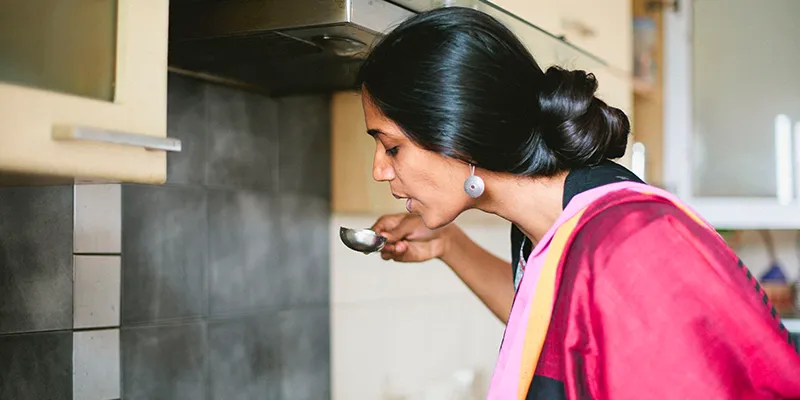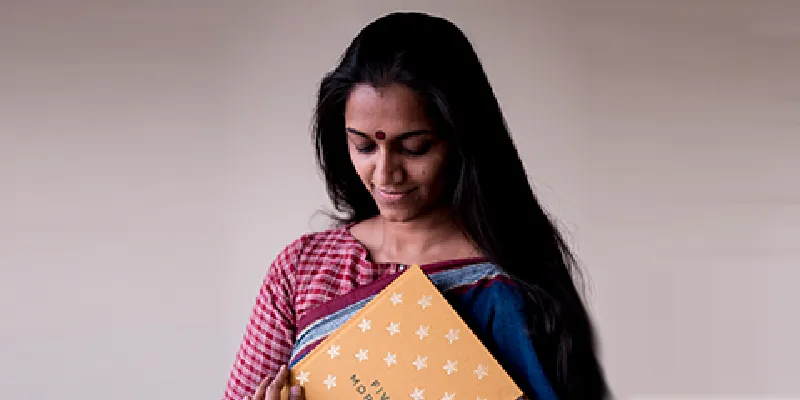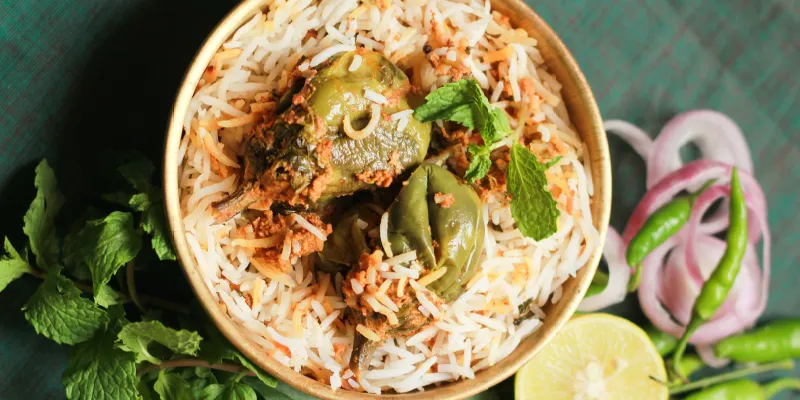How Archana Pidathala curated heritage recipes as a labour of love
Five Morsels of Love is a cookbook with a difference. The author, Archana Pidathala, who was recently featured in the New York Times, wrote it as a tribute to her grandmother with over 100 heritage recipes. It was a project that began in 2007, when Archana lost her grandmother, Nirmala Reddy who was the author of the Telugu cookbook Vanita Vantakalu. Soon, Archana decided to produce a full-fledged cookbook - Five Morsels of Love. It was produced after many hours of recipe-testing and tasting, photography and entrepreneurial effort. We spoke with Archana to find out more...

Hours of recipe testing and tasting went into the making of Archana's cookbook
YourStory Weekender: Can you tell us the inspiration behind your book, Five Morsels of Love?
Archana Pidathala: I lost my grandmother (or 'ammama' as I called her) in the summer of 2007 to cancer. She had independently published a Telugu cookbook in 1974. I remember telling her a year before she passed on, when I was still a student in Hyderabad, that I would help her publish an English cookbook after I got a job. As fate would have it, we lost her just a few months after I started working. It haunted me that I had not helped ammama fulfill her dream of bringing out an English cookbook. That was the beginning of the journey of Five Morsels.
YSW: How did you go about putting the book together? Are all the recipes tried and tested?
AP: I had never cooked till I picked up my grandmother’s book in 2007. It took me a while to get comfortable in the kitchen. My friend Chinmayie Bhat got on board to do the photography for the book. She and I decided to cook and photograph over the weekends. What began as a weekend project soon became an obsession. As I tested the recipes, I measured every ingredient in grams, cups and tablespoons. I quickly learnt from my editor Sonya Balasubramanyam (who is an expert baker and a former journalist) to have the right questions in my head and to be observant of every step of the cooking process. So I began recording accurate cooking times and heat levels at each stage along with concise easy-to-follow directions. I tested each recipe at least three times.

Five Morsels of Love is a tribute to Nirmala Reddy's culinary skills
YSW: What is unique about food from Andhra Pradesh?
AP: I think everybody’s family food is dear to them. Food is also laden with memories and people who we have shared it with.
The food from Andhra Pradesh is largely perceived to be hot and spicy and nothing else. That stereotype irks me as I think Andhra food is so much about robust flavours. The region I come from, Rayalaseema, is a dry and arid region. We use a lot of jaggery, tamarind, dried coconut, fresh herbs and spices to cook up some rather delicious dishes. We also have a lot of condiments accompanying a main meal. Podis, or spice powders, chutneys and pickles play an important role on our dining tables. And as with any other part of India, the cuisine changes every 100 kilometres of the state. Every household has its own version of rasam and gutti vankaya (the iconic stuffed eggplant curry).
YSW: What are your favourite recipes and why?
AP: There are plenty of favourite recipes as this is the food I’ve been having since childhood. So many memories associated with each dish. However, two recipes stand out.
I love the ulava charu, which is a slow-cooked thick rasam made with horse gram. This horse gram rasam has a very distinctive umami taste, traditionally cooked on wood fire for long hours, allowing for some really compelling flavours to develop. The last memory I have of this dish is of my grandmother feeding me a bowl of hot rice and ulava charu laced with fresh homemade butter on my wedding day.

Masala-stuffed eggplant with long-grained rice
The eggplant biryani is another favourite. It is a very clever dish and epitomises the ingenuity that shone in ammama’s cooking. Masala-stuffed eggplant is cooked till tender, and layered with long-grained rice and plenty of fresh herbs and then dum-cooked.
YS: What inspired the title of your cookbook?
AP: The five morsels in the book’s title refer to ammama’s five grandchildren. I am the oldest. During summer vacations, ammama would cook exquisite meals for us and ladle food onto one large plate. The five of us grandchildren would sit down on the floor cross-legged, eagerly waiting for ammama. Sharing ammama’s home cooked food from the same platter has tightly bound us cousins over years in a way that nothing else could.
YSW: What are some of the important steps to cook well according to you?
AP: The most important step, according to me, especially when one is a novice, is to taste along the process. Never forget to taste.
YSW: What are some of the mistakes cooks make that make their dishes go wrong?
AP: I can talk from my own experience. I started cooking in my early 30s. I made several mistakes along the way. Things would be under- or over-cooked. The salt would be off. The balance of flavours would be totally wrong. But with experience, I slowly mastered the nuances. I think if one can give oneself enough opportunities to fail, to learn, and be open to criticism, then one can become a good cook.
YSW: Why is food associated with memories?
AP: Food can nourish the soul as much as the body. The sense of smell and taste are powerful memory triggers. So, yes, food can never be separate from memory. This also explains why so much of food writing is laden with nostalgia.
YSW: What is your opinion on all the cookery shows and books out there?
AP: I love Chef’s Table on NetFlix, and used to watch a lot of MasterChef Australia. In general, I am not much of a screen person. I love books.
I have a growing collection of cookbooks from around the world. As long as a show or a book inspires one enough to cook, I am on board with it. Passive consumption is the bane of our generation. But an inspiring show or book can and should break it.
YSW: What has the response to your book been - here and abroad, and after the article in the New York Times?
AP: It is deeply satisfying to see people from across cultures connect to the story and celebrate ammama’s food. The NYT article about me got the word across quite a bit, and people wrote in with stories of how they loved the recipes. People from my own community feel it’s a trip down the memory lane for them, reminding them of their childhood and times spent with grandparents. The recipes are gold. They are working very well in kitchens around the world.
YSW: What is your advice to young chefs?
AP: I am a home cook and haven’t cooked professionally. But I can offer my grandmother’ advice to anybody who wants to cook. Trust your senses and hands over all else, and cook with your heart. The final dish will take care of itself.
YSW: What are your plans for the future?
AP: Ammama went on to write a second Telugu cookbook but the unpublished draft of over 300 recipes now rests on my study table. I want to pick that up and publish it in her voice. And, in general, I aspire to write more and get better with it.
Here’s a recipe from one of ammama’s personal favourites –
The hyacinth bean curry (Pithiki pappu kura)
Ingredients
For the masala
5 tbsp shredded, dried coconut
15 garlic cloves, peeled
1 tsp coriander powder
½ tsp turmeric powder
1 tbsp red chilli powder
½ tsp salt, or to taste
2 tomatoes, quartered
2 tbsp yoghurt
200g / 1 cup rice
560g / 4 cups peeled hyacinth beans, washed
A pinch of turmeric powder
15g / 1 gooseberry-sized ball of tamarind, soaked in 60ml / ¼ cup of hot water for 15 minutes
For tempering
1 tbsp vegetable oil
½ tsp mustard seeds
½ tsp de-husked, split black gram
½ tsp cumin seeds
2 dry red chillies, broken in half
10-15 fresh curry leaves
1 tsp sugar
salt to taste
2-3 tbsp chopped coriander leaves, to garnish
Method
Grind all the ingredients under the masala section, with a splash of water to a fine paste in a mixer or food processor. Remove and keep it aside. In the same mixer jar, blend the tomato and yoghurt to a smooth purée.
Pressure cook the beans with a pinch of turmeric powder on high heat for one whistle. Once the pressure settles, open the lid and add the freshly ground masala and tomato-yoghurt purée. Pressure cook it again on high heat for two whistles. Turn off the heat, and let the pressure settle.
Mash the tamarind with water and sieve the liquid into a bowl. Squeeze the tamarind to extract as much liquid and pulp as possible.
For the tempering, heat oil in a small, heavy-bottomed pan over high heat. Add the mustard seeds. When they splutter, add the remaining tempering ingredients in quick succession. Take the pan off the heat as soon as the split black gram turns golden. Add the tempering to the curry in the pressure cooker along with the tamarind extract, sugar and salt, and let it simmer uncovered for about 5-10 minutes. Garnish with coriander leaves, and serve hot with steamed rice.







